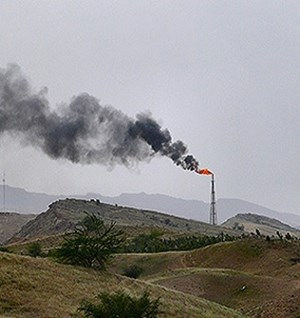Iran deal could help relieve tight global oil market
(Bloomberg) — A last-ditch attempt by Europe to revive the Iranian nuclear deal has stoked speculation that millions of barrels of oil are set to flood world markets. The return could be swift if Tehran’s previous comeback is any guide.
Should an agreement materialize, Iran could ramp up sales within months, raising supply by hundreds of thousands of barrels a day before the end of the year, according to the International Energy Agency. That would help relieve a tight global market, which has been roiled by Russia’s invasion of Ukraine.
When sanctions were eased following the 2015 deal, Iran’s crude output was restored more quickly and more completely than analysts had predicted. With no evidence of damage to oil fields or facilities, that feat may be repeated. The Persian Gulf nation also has an estimated 100 million barrels of crude and condensate in storage that can be released to the market almost immediately.
Tehran has this week responded to a “final” proposal to reactivate the 2015 accord, and the European Union is now consulting the US on a “way ahead.” Seen as the last hope of rescuing the deal, the blueprint is aimed at limiting Iran’s nuclear activity in exchange for easing sanctions, including on its oil.
The prospect of a quick return of Iranian supplies has helped keep benchmark Brent crude below $100 a barrel this month, a level it’s mostly exceeded since the start of the Ukraine war in February.
Of the 100 million barrels of oil in storage, about 40 million to 45 million are crude and the rest condensate, a light oil that’s pumped out together with gas, according to Iman Nasseri, Dubai-based managing director of energy consultants FGE.
Once stored oil is released, the bigger challenge will come in reviving dormant oil fields and arranging the contracts, vessels and insurance to ship those barrels. Yet Iran has continued to maintain many of its fields -- and key customer relationships -- during the years it’s been shut out of global trade.
The country could add as much as 900,000 barrels a day of production within three months of sanctions being eased, and potentially pump near its full capacity of about 3.7 million barrels a day within six months, Nasseri said.
Iran is producing about 2.5 million barrels of crude a day now, according to data compiled by Bloomberg. Following the 2015 deal, it took about three months to add 700,000 barrels a day and a year to get back to full capacity. That then fell apart with Donald Trump’s 2018 withdrawal from the agreement.
The pace of Tehran’s renewed oil comeback will be closely watched, with fuel demand recovering from the pandemic, Russian supplies shunned by multiple buyers, and most of Iran’s fellow OPEC+ members struggling to boost output.
Talks with world powers have dragged on for almost 18 months, dogged at various stages by political squabbles over terrorism sanctions, Iran’s demands for guarantees the U.S. won’t again renege on the deal, Russia’s war on Ukraine and nuclear inspections. A revived agreement remains far from certain.



